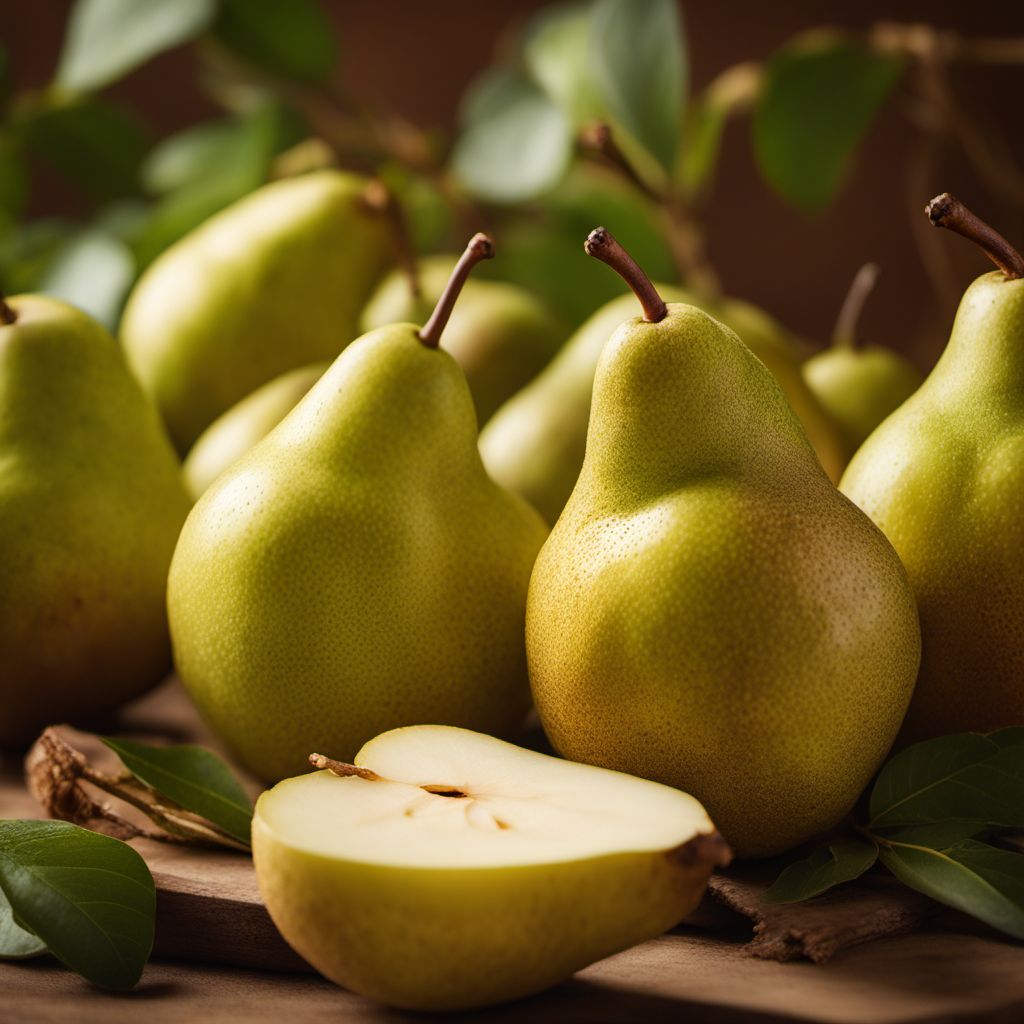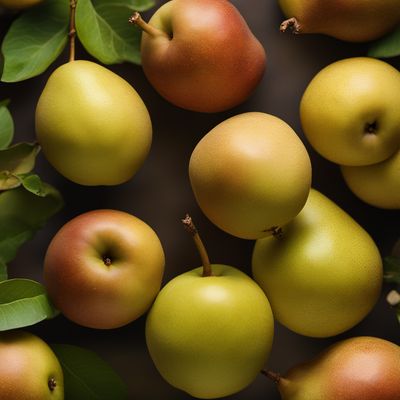
Ingredient
Pears and similar-
The Versatile Fruit: Pears and Their Kin
Pears and similar fruits, such as apples and quinces, are characterized by their crisp yet juicy flesh, which can range from buttery to slightly grainy. They come in various colors, including green, yellow, and red, and their flavors can range from sweet to tangy. With their refreshing taste and delicate aroma, pears are a popular choice for both raw consumption and cooking.
Origins and history
Pears have a rich history dating back thousands of years, with evidence of their cultivation found in ancient China, Egypt, and Greece. They were highly regarded in Greek and Roman mythology and were often associated with love and fertility. Pears have since spread to various parts of the world, becoming a staple in many cuisines and cultures.
Nutritional information
Pears are a good source of dietary fiber, vitamin C, and antioxidants. They are low in calories, with approximately 100 calories per medium-sized pear. Additionally, pears contain small amounts of potassium, vitamin K, and folate.
Allergens
Pears are not commonly associated with allergens, but individuals with birch pollen allergies may experience cross-reactivity with pears.
How to select
When selecting pears, look for fruits that are firm yet slightly yielding when gently pressed near the stem. Avoid pears with bruises, blemishes, or soft spots. The color of the skin may vary depending on the variety, so choose based on personal preference.
Storage recommendations
To prolong the freshness of pears, store them in the refrigerator, preferably in a perforated plastic bag to maintain humidity. They can also be stored at room temperature until ripe, but should be consumed promptly once ripe to prevent overripening.
How to produce
Pears can be grown in home gardens or orchards by planting young trees in well-draining soil and providing adequate sunlight and water. Regular pruning and pest control measures may be necessary to ensure healthy growth and fruit production.
Preparation tips
Pears can be enjoyed fresh, sliced in salads, or used in a variety of cooked dishes. They can be poached, baked, or grilled to enhance their natural sweetness. Pears also pair well with cheeses, nuts, and spices, making them a versatile ingredient in both sweet and savory recipes.
Substitutions
Apples can be used as a substitute for pears in most recipes, as they share a similar texture and flavor profile. However, keep in mind that apples tend to be slightly more tart than pears.
Culinary uses
Pears are commonly used in desserts such as pies, tarts, and crumbles. They can also be incorporated into salads, sauces, and chutneys. In savory dishes, pears add a touch of sweetness to meat dishes, such as pork or duck. Additionally, pears can be used to make jams, jellies, and preserves.
Availability
Pears are widely available in temperate regions around the world. They are cultivated in countries such as China, the United States, Italy, Argentina, and France.


